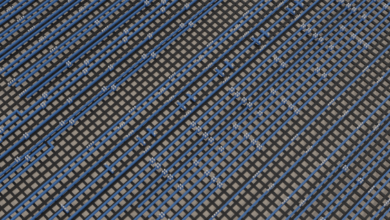
How to Silence Quantum Noise
[ad_1]
Insider Summary
- The researchers obtained a formula that predicts the effects of environmental noise, an important advance for designing and building quantum computers.
- The team calculated the quantum capacity of the bosonic dephasing channel, for all possible forms of dephasing noise
- Image: Environmental noise, represented here as a devil, can affect the state of a quantum computer by changing the phase of various branches of its wave function in unpredictable ways; we call it dephasing. Here, the position of the clock hands represents the phase of a certain branch of the wave function. Its modifications, unknown to us, will affect the smooth ballet of phase recombination that quantum computing relies on. (Credit: L. Lami)
PRESS RELEASE — Researchers Ludovico Lami (QuSoft, University of Amsterdam) and Mark M. Wilde (Cornell) have made significant advances in quantum computing by deriving a formula that predicts the effects of environmental noise. This is critical to designing and building quantum computers capable of working in our imperfect world.
Quantum computing choreography
Quantum computing uses the principles of quantum mechanics to perform calculations. Unlike classical computers, which use bits that can be either 0 or 1, quantum computers use quantum bits, or qubitswhich can be in a superposition of 0’s and 1’s simultaneously.
This allows quantum computers to perform certain types of computations much faster than classical computers. For example, a quantum computer can factor very large numbers in a very short time compared to a classical computer.
While one could naively attribute such advantages to the ability of quantum computers to perform multiple calculations in parallel, the reality is more complicated. The quantum wave function of a quantum computer (which represents its physical state) has several branches, each with its own phase. The phase can be thought of as the position of the hands, which can point in any direction on the dial.
At the end of its calculations, the quantum computer recombines the results of all calculations performed simultaneously on different branches of the wave function into a single answer. “The phases associated with different branches play a key role in determining the outcome of this recombination process, not unlike how a ballerina’s step timing plays a key role in determining the success of a ballet performance,” explained Lami.
Annoying environmental noise
A significant hurdle for quantum computing is environmental noise. Such noise can be likened to little devils changing the phase of various branches of the wave function in unpredictable ways. This process of destroying the phases of a quantum system is called dephasingand can undermine the success of quantum computations.
Dephasing can occur in everyday devices such as fiber optics, which are used to transfer information in the form of light. Light rays traveling through an optical fiber can take different paths; since each path is associated with a specific phase, not knowing the path taken equates to effective dephasing noise.
In their new publication at Nature PhotonicsLami and Wilde analyzed a model, called bosonic dephasing channel, to study how noise affects the transmission of quantum information. It represents dephasing which acts on one mode of light at a certain wavelength and polarization.
The number that measures the effect of noise on quantum information is quantum capacity, which is the number of qubits that can be safely transmitted per fiber usage. The new publication provides a complete analytical solution to the problem of calculating the quantum capacity of a bosonic dephasing channel, for all possible forms of dephasing noise.
Longer messages resolve errors
To counter the noise effect, one can include redundancy in the message to ensure that the quantum information can still be retrieved at the receiving end. This is akin to saying “Alpha, Beta, Charlie” instead of “A, B, C” while on the phone. Even if the message sent is longer, redundancy ensures that the message is understood correctly.
The new study calculates exactly how much redundancy needs to be added to a quantum message to protect it from dephasing noise. This is important because it allows scientists to measure the effect of noise on quantum computing and develop methods to counter this effect.
[ad_2]
Source link





